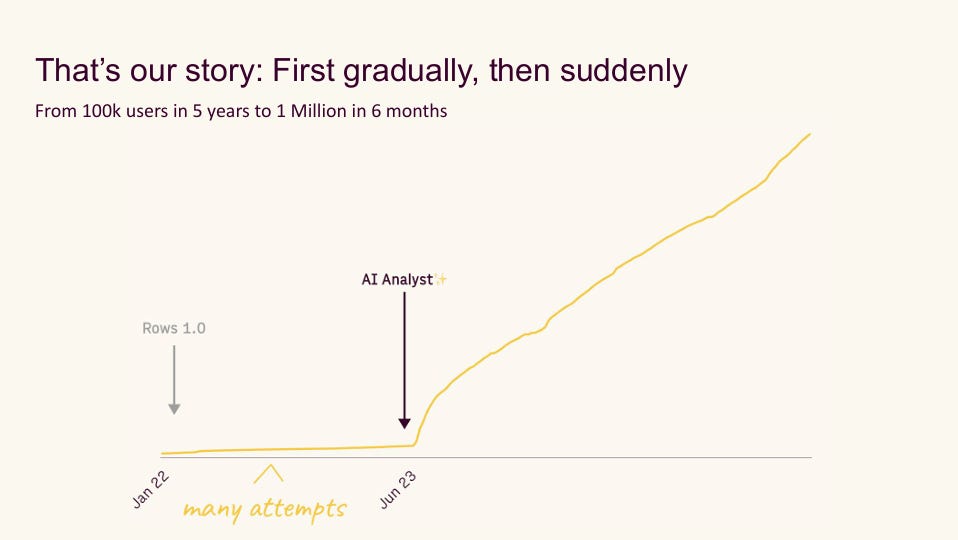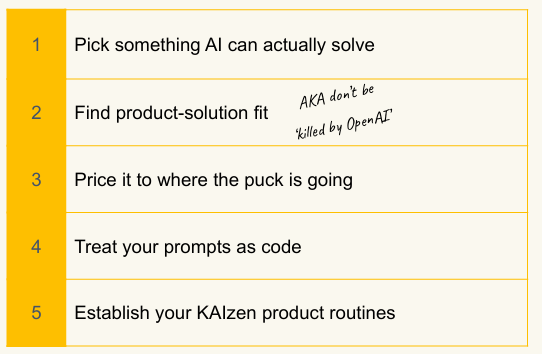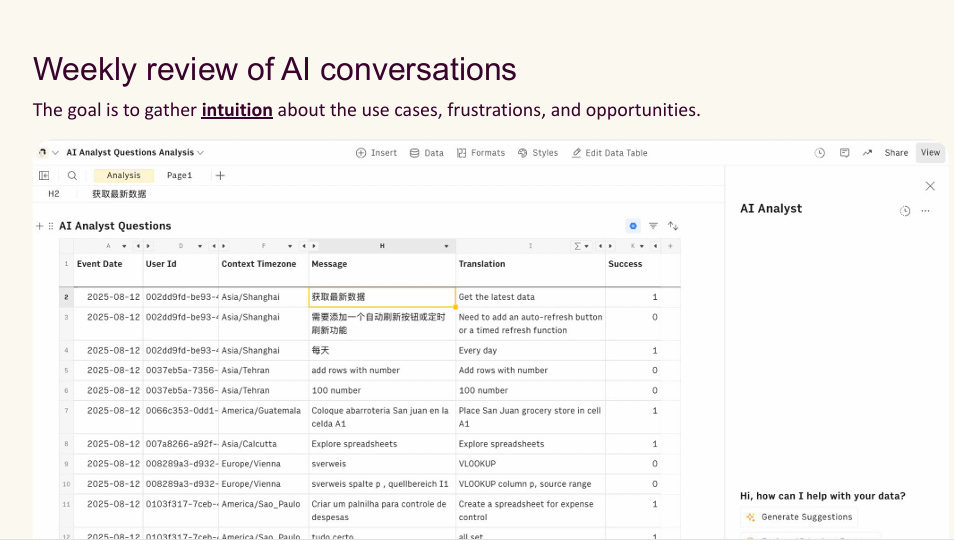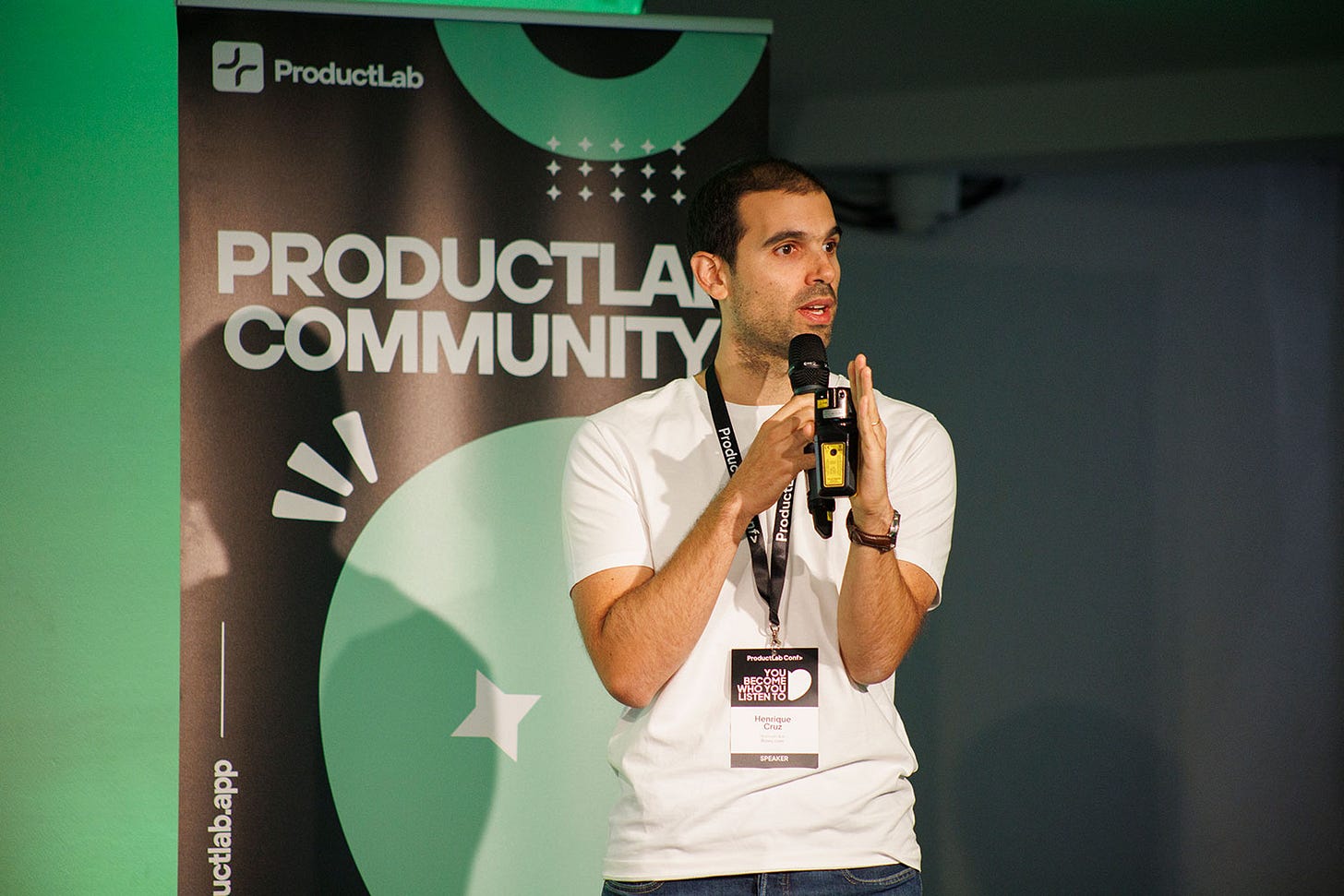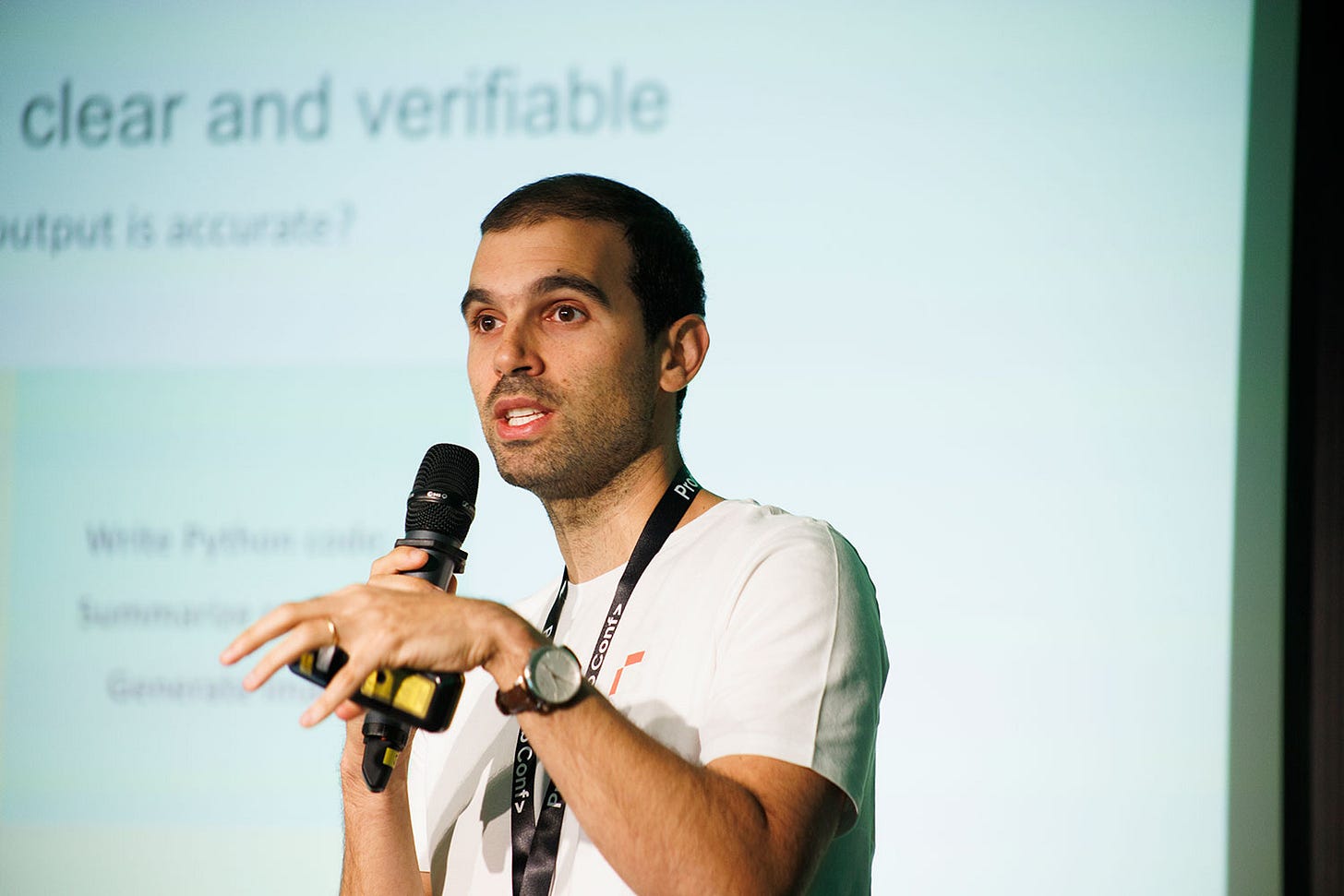How to build AI products that don't get killed by OpenAI
What going from 100K to 1M users in 6 months taught Rows.com about building products that improve every day + Slide to Download
When
and his team at Rows.com launched their AI Analyst feature, they did something most startups dream about: they turned a $6,000 influencer campaign into 30 million impressions, 1 million sign-ups, and thousands of backlinks. But here’s the real story—it took them 5 years to reach their first 100,000 users, then just 6 months to hit 1 million.At ProductLab Conference 2025 in Berlin, Henrique shared the hard-won lessons from building what they claim is the world’s smartest AI spreadsheet. Unlike most AI product talks filled with theory, this was pure tactical gold from the trenches.
“In maybe 8 or 10 years of building and working in product, this is the first time that I can tell you that there’s a metric that it’s actually helpful to look at every day.”
— Henrique Cruz
The Speed of Now
Tech adoption isn’t just fast anymore—it’s exponential. What once took decades now happens in months. The next breakout app could reach a million users in hours. Henrique’s insight? Timing matters more than perfection.
They launched when the market was ready, even though the product wasn’t perfect. The result? They were “in the right place at the right time”—but that place was earned through consistent execution.
“It was the right(ish) product, at the right time. A $6k influencer campaign turned into 1 Million sign-ups.”
5 Principles for Building AI Products That Improve Daily
Henrique distilled years of experimentation into five core principles. This isn’t theory—it’s what actually works when thousands of users are hitting your AI every day.
1. Pick Problems AI Can Actually Solve
Not every problem needs AI. The sweet spot? Tasks where success is immediately obvious to users.
Henrique’s rule: Look for problems where users can instantly tell if the AI nailed it or completely missed. Avoid fuzzy creative work that needs endless back-and-forth iteration. That’s why spreadsheet formulas work beautifully—you either get the right answer or you don’t.
Action item: Audit your AI use cases. For each one, ask: “Can the user tell within 5 seconds if this worked?” If not, reconsider.
2. Don’t Get “Killed by OpenAI”
This was Henrique’s blunt warning: if you’re not 10x more useful than raw ChatGPT, you’re toast. The app layer has 80%+ margins, but only if you’re genuinely more valuable than the base model.
His team assumes models will be fast, cheap, and smart. They’re building for a world where AI costs approach zero. Your defensibility can’t come from the model—it must come from your product.
Action item: Run this test: Ask ChatGPT your product’s core question. If it gets 70%+ of the way there, you need more defensibility. Add domain expertise, workflows, or data integrations that the base model can’t access.
3. Price Where the Puck Is Going
Henrique introduced a brilliant pricing framework based on two dimensions: frequency of use and token consumption.
The matrix:
Low frequency + Few tokens = Free (no-brainer)
High frequency + Many tokens = Cannot afford to offer free trials
Low frequency + Many tokens = Free to try (onboarding friction is worth it)
High frequency + Few tokens = Freemium sweet spot
His team watches these metrics daily because token costs are dropping fast. What’s expensive today might be free next quarter.
Action item: Map your features onto this matrix. Adjust your pricing tiers accordingly. Review monthly—the AI cost landscape shifts constantly.
4. Treat Prompts as Code
This might be Henrique’s most important insight: Prompt engineering IS software engineering.
“We noticed that our answer rate had dipped from, you know, let’s say 85 to 73 or something and it had dipped because the day before we had made a change on how to process part of the instructions. We had run a few tests, it had passed, but then once hundreds of people are using it at night in the US or whatever, clearly this wasn’t working. And so we basically had to roll back on Saturday.”
— Henrique Cruz on why prompts need version control
At Rows, prompts go through pull requests, testing environments, and automated evaluations. They version everything. They rollback when things break. One Saturday, they caught their answer rate dropping from 85% to 73% because of a prompt change—and rolled back immediately.
The anatomy of their prompt (26,000 characters for their game analysis feature):
Context: What the app knows about the user
Instructions: The system prompt (broken into objectives, optimal solutions, and rules)
Examples: Concrete demonstrations
Reflection: When the AI checks its own work
Action item: Stop treating prompts like ad-hoc text. Set up version control, A/B testing infrastructure, and automated evals. If you’re not treating prompts like production code, you’re doing it wrong.
5. Establish KAIzen Routines
Henrique loves the Japanese concept of Kaizen—continuous improvement. He calls it “KAIzen” for AI products (clever, right?).
“This is my favorite thing maybe that I do every week, which is actually reviewing the prompts of what the users are asking the AI... You try to get intuition about what are people using the product for. That’s the whole goal.”
— Henrique Cruz on weekly prompt reviews
Here’s what they review:
Daily:
Answer rate: Can we parse and execute what the AI returns? (They went from 86% to 95%)
Prompts per day: Volume tracking (they’re 5x vs. their baseline)
Cost per prompt: Currently under $0.08, but they know it can drop 90%
Failed questions: What broke and why?
Weekly:
User conversations: Read actual prompts to understand use cases (his favorite ritual)
New models: Test every new release from OpenAI, Anthropic, Google, Meta
Model switching infrastructure: They keep their architecture model-agnostic so they can swap providers in minutes
Henrique shared actual user prompts they see: people trolling them (”Who is LeBron James?”), asking for impossible features (”Can you see who doesn’t follow me on Instagram?”), wanting everything in German, and exposing bugs (”Where is it done?”—when the AI said “done” but did nothing).
This weekly review gives them intuition about what users actually want versus what they thought they wanted.
Action item: Block calendar time NOW—30 minutes daily for metrics, 2 hours weekly for prompt analysis. This isn’t optional surveillance; it’s how your AI product learns.
The Numbers That Matter
When asked about the impact of these routines, Henrique estimated:
80% of improvements came from big architectural changes
20% from daily kaizen tweaks
But here’s the key: those daily reviews inform the big architectural decisions. You can’t make smart big bets without ground-level intelligence.
“Maybe 80% of the improvements we’ve had over the last five or six weeks was a big architecture change... But these things are really important to get intuition about what’s working and not working.”
— Henrique Cruz on the balance of daily tweaks vs. major changes
The Honest Truth About User Feedback
Henrique’s team debated adding thumbs up/down buttons. They decided against it. Why? It creates biased samples. Only motivated users click—either very happy or very angry.
“We always said no because it’s going to really be a biased sample. A small percentage of people will click yes or click no and then maybe overindex on the people that said yes.”
— Henrique Cruz on why they don’t use thumbs up/down feedback
Instead, they look at behavior:
Do users come back?
Do they keep prompting?
What does the conversation history show?
Some users hit their AI 70 times in one day and never reply to emails. Clearly it’s working for them. Retention tells the real story.
“Sometimes you have people who don’t reply to any email and use it, you know, had to use it like 70 times in one day prompting. Clearly, it worked for something for him or her.”
— Henrique Cruz
Build with Belief, Not Hope
Perhaps the most striking moment came during Q&A. Henrique was asked how far ahead they bet on pricing dropping. His answer revealed their conviction: “We’re very close. Within 12-18 months, we’ll run most things on open-source models, and cost won’t be a problem.”
“I think we’re very close... we already use an open-source model in the AI analyst for a small task and the open source model is basically free... we think that within the next 12-18 months we’ll be running most things on open source and then the cost is not really a problem.”
— Henrique Cruz on betting on the future of AI costs
They’re not optimizing for today’s costs. They’re building for a world where smart AI is essentially free. That changes everything about product strategy.
Your Move
Building AI products isn’t magic. It’s discipline.
Henrique and the Rows team proved that with the right framework—picking the right problems, treating prompts as code, establishing daily rituals, and pricing for the future—you can build products that genuinely improve every single day.
The AI landscape moves fast, but the fundamentals remain: understand your users, measure obsessively, iterate constantly, and always assume the technology will get better and cheaper.
Start with one thing tomorrow: pick ONE daily metric to review. Answer rate, prompt volume, user retention—just one. Make it a ritual. Then add the weekly prompt reviews.
The AI product that wins isn’t the one with the best model. It’s the one that gets 1% better every day while everyone else ships and forgets.
Want to dive deeper? Henrique is active on X at @henrm_cruz, Substack
, and he his the one who taught me the most about Growth and PMM on LinkedIn. You can try Rows at rows.comHere is his presentation!


